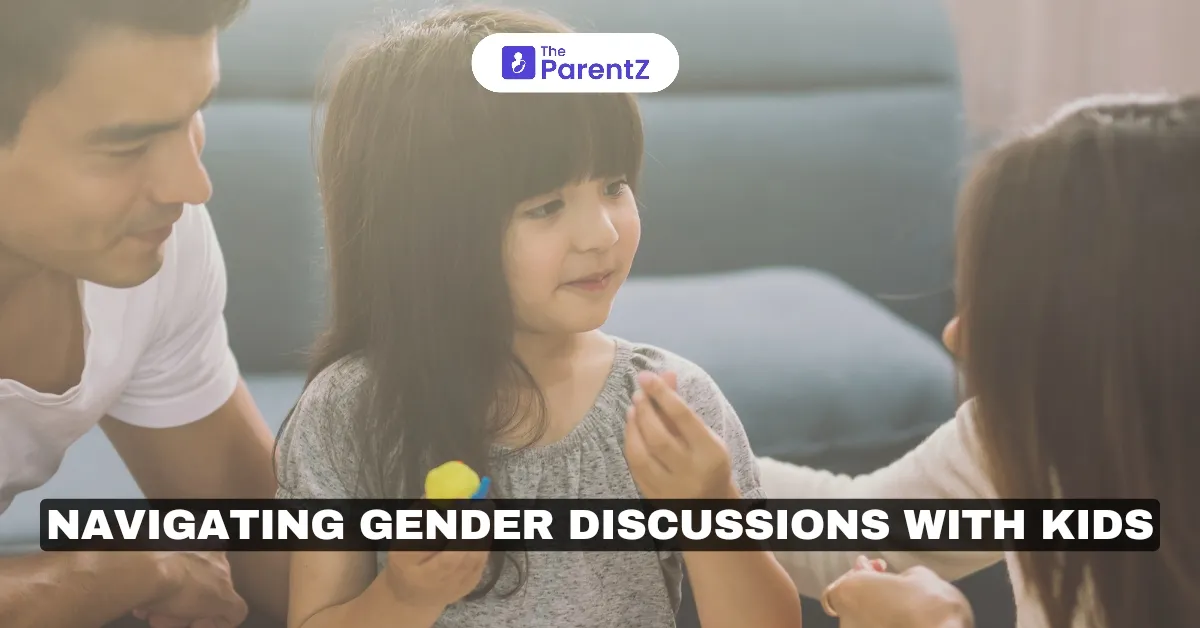The world we live in, despite all the strides towards equality, is still deeply ingrained with gender stereotypes. From the toys we buy to the career paths we encourage, subtle and not-so-subtle messages about what it means to be a "boy" or a "girl" shoot our children constantly. These messages can be harmful, limiting both boys and girls in their potential and perpetuating a cycle of inequality.
Therefore, as parents, we need to equip our kids with the tools to navigate these discussions and understand gender education from an early age.
Understanding the World
The world we live in is rife with stereotypes and expectations that can be damaging to both boys and girls. Every day, our children encounter messages about gender – from toy store aisles divided into pink and blue sections to comments like "Boys don't cry" or "That's not ladylike."
Toxic masculinity often pressures boys to conform to rigid standards of strength and dominance, while girls may feel constrained by expectations of submission or passivity. This toxic environment can lead to harmful behaviors and attitudes that affect everyone involved.
For instance, boys might feel they cannot express vulnerability or seek help due to societal expectations. On the other hand, girls may struggle with self-esteem issues stemming from societal pressures to look or act a certain way. Both genders suffer under these stereotypes, making it imperative for us to engage in meaningful gender education discussions.
Why Gender Education Matters
Gender education is vital for fostering an inclusive mindset in children. It helps them understand that both genders deserve equal treatment and respect. By addressing gender issues early on, we can help our children develop a better understanding of identity, equality, and respect for diversity.
Here are a few reasons why gender education is essential:
- Breaking Down Stereotypes: By educating children about gender roles and expectations, we can help dismantle harmful stereotypes that limit their potential.
- Promoting Empathy: Understanding the struggles faced by different genders fosters empathy and compassion in children.
- Encouraging Open Dialogue: When children feel comfortable discussing gender issues, they are more likely to express their feelings and seek guidance when faced with challenges.
The Path Forward: Balanced Gender Education
Effective gender education begins with acknowledging that equality doesn't mean sameness. It means recognizing that every person deserves respect, opportunities, and the freedom to be themselves, regardless of their gender. Here's how parents can approach these crucial discussions:
For Young Children (3-6 years):
- Focus on simple messages about respect and kindness.
- Challenge rigid thinking with questions like "Why do you think only boys can play with trucks?"
- Use everyday moments to discuss gender stereotypes.
- Celebrate diverse role models of all genders.
For School-Age Children (7-12 years):
- Discuss media representations and stereotypes
- Explore the historical context of gender roles
- Address body image and self-worth
- Talk about respect in friendships
For Teenagers:
- Examine societal pressures and expectations
- Discuss consent and healthy relationships
- Address online harassment and gender-based bullying
- Explore identity and self-expression
What to Avoid?
- Don't demonize any gender
- Avoid oversimplified solutions
- Don't dismiss children's observations
- Never shame children for questions
- Don't enforce rigid gender roles
- Avoid generalizations about gender
Essential Teaching Points
Equality Doesn't Mean Erasing Differences: Help your children understand that supporting gender equality doesn't require denying biological differences or attacking either gender. It's about ensuring everyone has equal opportunities and respect.
Challenge Stereotypes Thoughtfully: When your children make stereotypical statements, use them as teaching moments. Ask questions like:
- "What makes you think that?"
- "Do you know any examples that show something different?"
- "How might someone feel if they're told they can't do something because of their gender?"
Celebrate Diversity in Strength: Teach your children that strength comes in many forms:
- Emotional strength in showing vulnerability
- Physical strength in various ways
- Mental strength in problem-solving
- Social strength in building relationships
Model Healthy Attitude: Children learn most from what they observe. Consider:
- How household responsibilities are shared
- The language used about gender
- Reactions to gender-based marketing
- Treatment of people of all genders
Be Prepared for Resistance
Understand that some discussions may lead to resistance or discomfort from your child, especially if they have been exposed to traditional views elsewhere (like school or media). Be patient and willing to revisit topics as needed.
Conclusion
The goal of gender education isn't to eliminate gender differences but to eliminate gender-based discrimination and limitations. We want our children to grow up understanding that their worth isn't determined by their gender, and their opportunities shouldn't be limited by it either.
Remember that these conversations aren't about picking sides or creating division. They're about building a future where all children can thrive, express themselves authentically, and respect others' right to do the same. By having these important discussions with our children, we're not just shaping their understanding of gender – we're helping create a more equitable and compassionate world for everyone.









Be the first one to comment on this story.